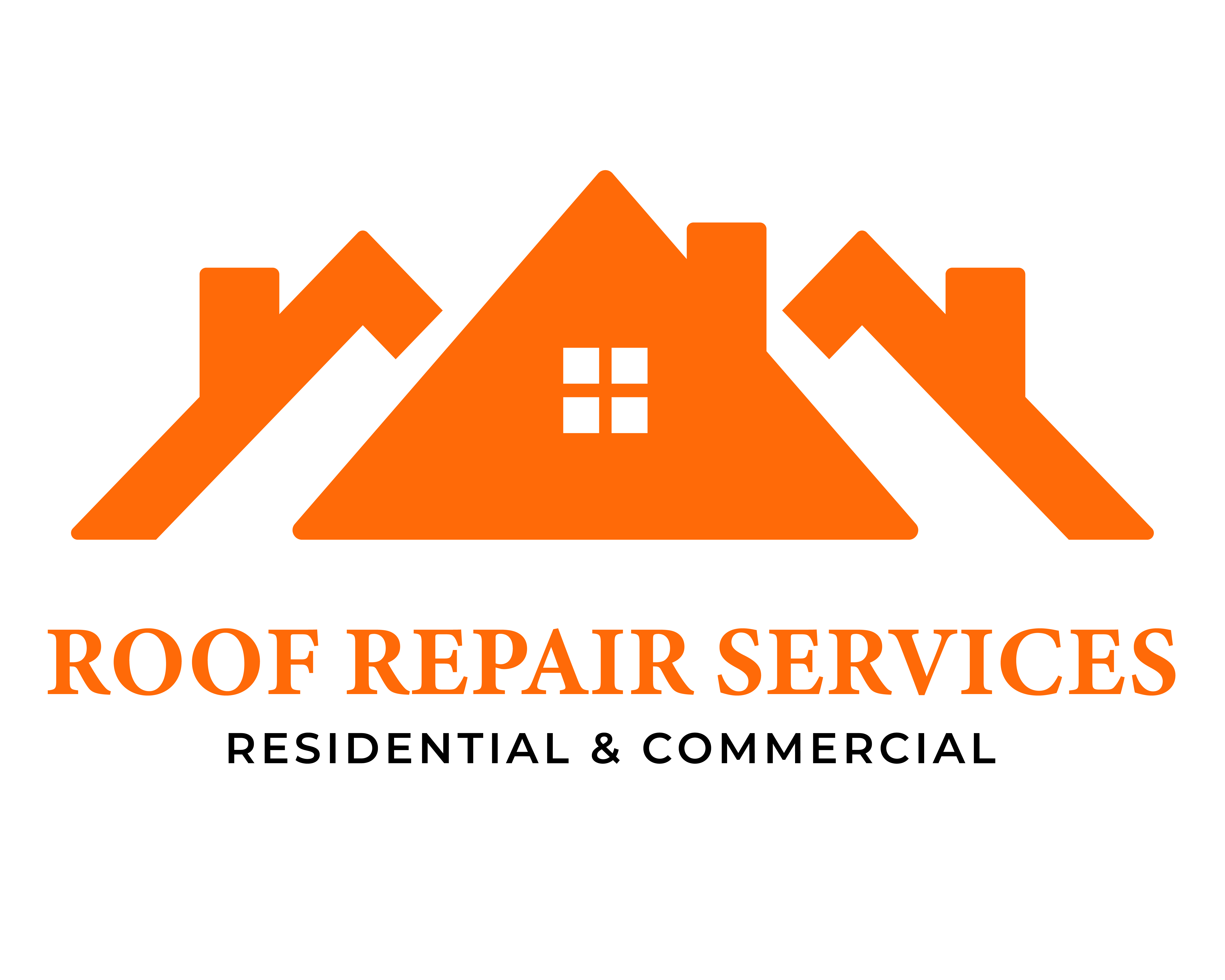Flat Roof Replacement - Roof Repair Services
- Home
- Flat Roof Replacement
Car Repairing
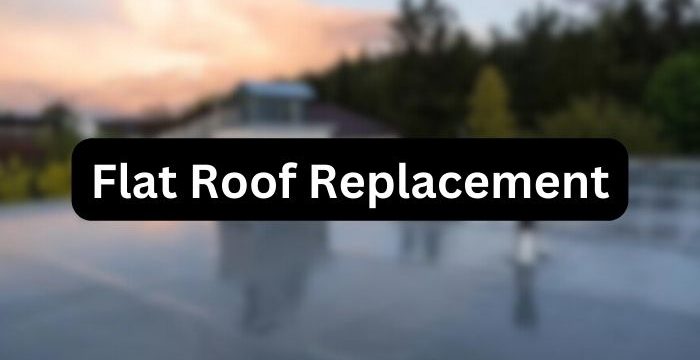
- February 20, 2024
- By: roofrepair_admin
- General
- Comments: 0
Flat Roof Replacement
Replacing or replacing a flat roof is a significant undertaking that requires careful planning, the right materials, and skilled installation to ensure longevity and performance. This guide will walk you through the essentials of flat roof replacement, highlighting the importance of choosing and installing the right materials and professional roofers for the job.
Flat roof replacement is a critical process for maintaining the integrity and functionality of commercial buildings and residential properties with either flat roofs or low-slope roofs. Unlike a sloped roof, a flat roof is almost completely flat, with only a slight pitch to allow water drainage. Over time, flat roofs may develop issues such as standing water, leaks, and wear from UV rays, making roof replacement necessary. The installation process of flat roof materials is complex and time-consuming, often involving the removal of the old roofing material and the careful application of a new roof surface.
Understanding Flat Roof Systems
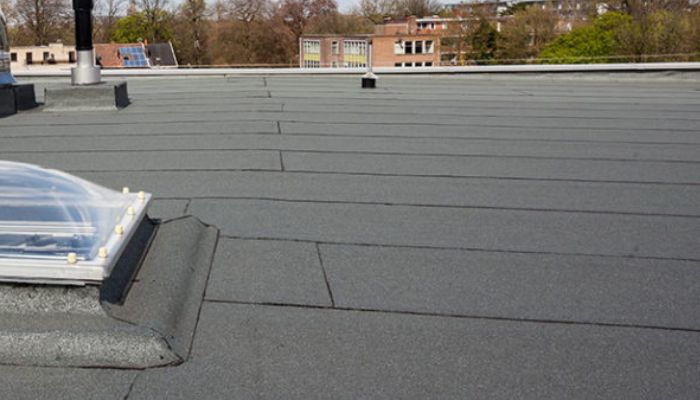
Flat roofing systems come in various materials, each with its advantages and considerations. Popular flat roofing materials include EPDM (ethylene propylene diene monomer) rubber roofing, TPO (thermoplastic polyolefin), PVC, modified bitumen, and built-up roofing (BUR). EPDM rubber roofing is highly resistant to UV rays, temperature fluctuations, and heavy rain, making it a popular choice for flat roofing installations. TPO and PVC are known popular flat roofing materials for their fire-resistant properties and ease of installation. Modified bitumen and built-up roofing offer durability and are particularly suited for roofs with heavy foot traffic.
Signs Your Flat Roof Needs Replacement
Identifying when your existing flat roof needs a complete replacement is crucial to prevent further damage to your property. Signs include visible wear and tear, such as cracks, blisters, or air bubbles in the roofing material, standing water after heavy rain, and leaks inside the building. If the roof surface of residential building is old or you notice significant damage, it’s time to consider installing a new flat roof.
Choosing the Right Material for Your Flat Roof
Selecting the right flat roof material is a decision that impacts the flat roof installation’s longevity, maintenance, and overall cost. Factors to consider include the flat roof material, size, climate, building usage, and budget. EPDM material, for example, offers an average lifespan of 20 to 25 years and is relatively easy to repair, making it a cost-effective option for many. TPO and PVC are excellent choices for energy efficiency and are highly resistant to chemicals and grease, ideal for buildings with air conditioning units or other rooftop installations.
Preparation for Flat Roof Replacement
Before the roof replacement begins, it’s essential to hire a professional roofer experienced in flat roofing installation. A thorough inspection of the existing, flat roofing, will determine the extent of damage and the best course of action. Discussing material types, average costs, and additional costs, such as labor and safety wear, will help you budget for the project. Preparing the roof area, including removing any debris and ensuring the surface is completely clean, is crucial for a successful flat roofing installation.
The Replacement Process: What to Expect
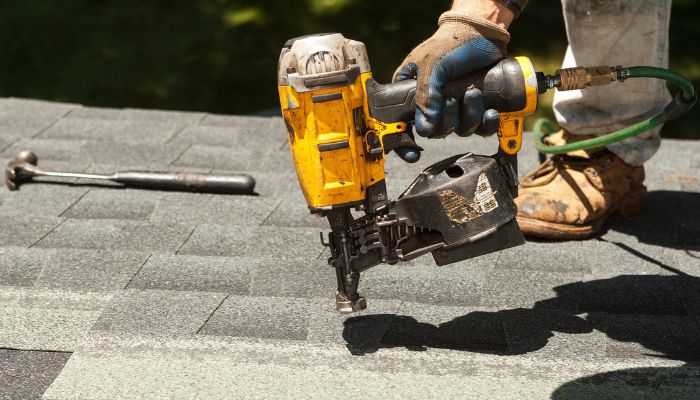
The flat roof replacement process can vary depending on the roofing material and the condition of the existing flat roof material. Generally speaking, the old roofing materials are first removed, often requiring tools like a pry bar or wallpaper scraper to eliminate old roofing tar or adhesive. The installation of a new flat roof involves laying down the chosen roofing material, such as an EPDM membrane or modified bitumen sheets, ensuring it’s free of air bubbles and securely adhered to the old roof and surface. For materials like EPDM, applying a water-based adhesive evenly across the surface is essential for a secure installation. The complexity of the task, from dealing with air conditioning units to ensuring the front edge of the roof is properly sealed, underscores the importance of professional installation.
Flat roof replacement is not a typical DIY project due to its complexity and the skills required for a successful installation. Professional roofers have the experience, tools, and knowledge to handle the nuances of both flat roofs and roofing materials, ensuring your new flat roofing material is installed correctly and built to last. Whether you’re considering EPDM rubber roofing, TPO, or another material type, the key to a successful flat roof replacement lies in choosing the right materials and professional installation to protect your property for years to come.
Installation Nuances for Different Flat Roof Materials
Each flat roofing material requires specific installation techniques to maximize its lifespan and effectiveness. For instance, EPDM roofing, a rubber membrane known for its durability and resistance to UV rays, requires precise application of water-based adhesive to install it. The rubber membrane installation also must be laid out completely clean and free from debris to avoid air bubbles that can compromise the roof’s integrity.
GRP roofs, another popular choice, demand a dry and warm condition for the resin to cure properly. This material is known for its strength and seamless finish, offering a robust solution for flat roofs. The installation process for GRP roofs is more labor-intensive, often reflecting in higher labor costs per install, but resulting in a highly durable roof surface with easy repairs.
Modified bitumen and built-up roofing (BUR) involve layering asphalt or tar with reinforcing fabrics, creating a thick, resistant barrier. These materials are applied hot, requiring professional roofers equipped with safety wear to manage the installation safely and effectively.
Maintenance and Repairs: Ensuring Longevity
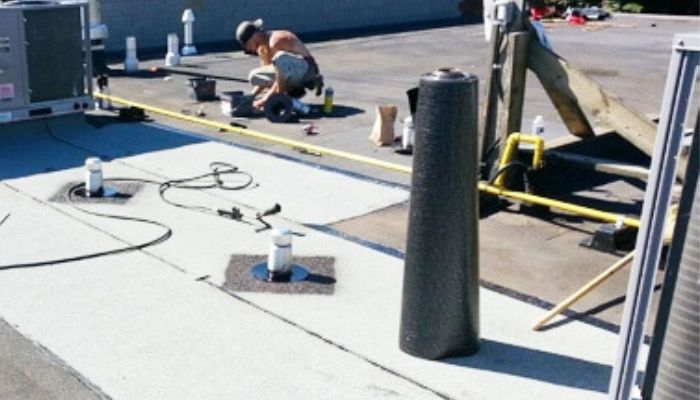
Flat roofs, while durable, require regular maintenance to prevent common issues like leaks and standing water. Periodic inspections, especially after heavy rain or extreme weather conditions, can help identify potential problems early. For flat roof materials, EPDM and other rubber roofing materials, repairs are relatively easy and often involve applying a patch over the damaged area. TPO and PVC roofs might require heat welding to repair seams or punctures, a complex task often best left to professional roofers.
Maintenance also includes keeping the roof clean of debris and ensuring drainage systems are clear to prevent standing water. Timber fillets can be used to improve water runoff on completely flat roof surfaces commercial buildings, reducing the risk of water damage over time.
Cost Considerations: Budgeting for Your Flat Roof Replacement
The cost of replacing a flat roof varies widely depending on the material type, roof size, complexity of the installation, and geographic location built up a flat roofing installation. EPDM roofing is generally one of the more affordable options, offering a good balance between cost and performance. TPO and PVC might present higher upfront costs but can offer energy savings over time due to their reflective properties.
Labor costs constitute a significant portion of the total expense of roof space, especially for materials requiring specialized installation techniques. DIY roof installation can reduce costs but is not recommended due to the complex nature of flat roof replacement and the potential for costly mistakes.
Additional costs to consider include the removal of the old used roofing contractor, disposal fees, and any necessary repairs to the old roof or structure before installing the new roofing material. Professional roofers can provide detailed estimates, including all potential costs, to help you budget for your project.
Choosing a Professional Roofer: The Key to Success

Selecting the right roofing contractor is crucial for a successful flat roof replacement. Look for professionals with specific experience in flat roofing materials and a solid track record of quality installations. Professional roofers can navigate the complexities of the whole flat roof installation, and process, from managing air bubbles in EPDM installations to applying adhesive correctly for a secure and lasting fit.
Ensure the roofer you choose is licensed, insured, and willing to provide references or examples of previous work. A reputable contractor will also offer a warranty on both materials and labor, providing peace of mind that your investment is protected.
Conclusion
Flat roof replacement is a significant investment in your property’s longevity and safety. By understanding the nuances of different roofing materials, maintaining your new roof properly, and working with professional roofers, you can ensure your new flat roof will provide reliable protection for years to come. Whether you opt for the durability of EPDM, the energy efficiency of TPO, or the traditional appeal of built-up roofing, the right approach to installation and maintenance can make all the difference in your new roof top’s performance and lifespan.
